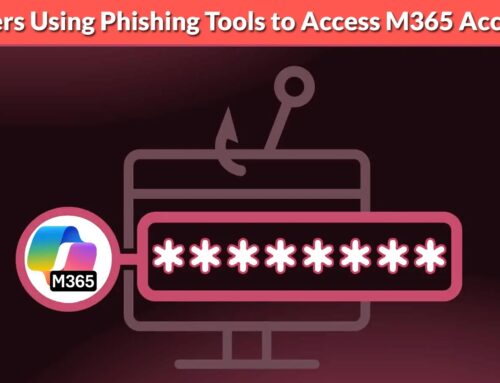
New Mac Malware Dubbed ‘JSCoreRunner’ Weaponizing PDF Conversion Site to Deliver Malware
JSCoreRunner: Unpacking the Mac Malware Campaign Delivering Payloads via PDF Conversion
A new, highly sophisticated macOS malware campaign, dubbed JSCoreRunner, has emerged, leveraging a seemingly innocuous PDF conversion website to ensnare unsuspecting users. This campaign signals a significant evolution in macOS threat landscapes, showcasing how adversaries are adapting their strategies to bypass Cupertino’s robust security measures and achieve alarming zero detection rates across major security platforms.
The deceptive nature of this attack, coupled with its multi-stage payload delivery, underscores the critical need for heightened awareness and robust security practices among Mac users and IT professionals alike. Understanding the mechanics of JSCoreRunner is paramount to fortifying defenses against such advanced persistent threats.
The Deception: Weaponizing PDF Conversion Services
At the heart of the JSCoreRunner campaign lies a cunning social engineering tactic: masquerading as a legitimate online PDF conversion service. Users seeking to convert documents online may stumble upon this malicious site, unaware that it serves as the initial vector for a complex infection chain. This approach exploits the common, often unverified, use of third-party online tools, transforming a productivity aid into a conduit for malware delivery.
Instead of a straightforward conversion, the website initiates a two-stage payload delivery process. This multi-layered approach is designed to evade detection and ensure persistence on the compromised system, making it particularly challenging to identify and mitigate without specialized tools and analysis.
JSCoreRunner’s Two-Stage Payload Delivery Explained
The sophistication of JSCoreRunner is evident in its meticulously crafted two-stage payload delivery system:
- Stage One: Initial Loader/Dropper. The user unwittingly downloads an initial application or script, disguised as a necessary component for the PDF conversion. This initial dropper is designed to be lightweight and, crucially, to maintain a low detection footprint across antivirus engines. Its primary function is to establish a foothold and prepare the system for the next stage.
- Stage Two: Core Malware Delivery. Once the initial stage is set, the dropper retrieves and executes the main JSCoreRunner malware. This secondary payload contains the core malicious functionalities, which can range from data exfiltration and credential harvesting to establishing remote access for further system compromise. The modular nature of this delivery allows attackers to update or swap out the final payload without altering the initial infection vector, enhancing their agility and persistence.
Evasion Techniques and Zero Detection Rates
One of the most alarming aspects of JSCoreRunner is its reported ability to achieve near-zero detection rates on major security platforms. This is likely attributable to a combination of advanced evasion techniques:
- Obfuscation and Encryption: The malware often employs sophisticated code obfuscation and encryption to conceal its malicious intent, making static analysis difficult for security software.
- Polymorphism: Variations in the malware’s signature or code can be introduced across different infections, allowing it to bypass signature-based detection mechanisms.
- Trust Exploitation: By initially leveraging seemingly legitimate services or signed applications, JSCoreRunner can circumvent some operating system security checks that flag unknown or unsigned executables.
- Dynamic Loading: The multi-stage approach, where the final malicious code is only downloaded and executed after initial vetting, can evade sandboxing and behavioral analysis that only observe the initial dropper.
Remediation Actions for JSCoreRunner and Similar Threats
Given the advanced nature of threats like JSCoreRunner, a multi-layered approach to security is essential for macOS environments. Here are crucial remediation and prevention actions:
- Exercise Extreme Caution with Downloads: Never download or execute software from untrusted or unverified websites, especially for common tasks like document conversion. Verify website legitimacy and use well-known, reputable services.
- Maintain Current OS and Software Updates: Regularly update macOS, web browsers, and all installed applications. These updates often include patches for known vulnerabilities that malware might exploit.
- Implement Robust Endpoint Protection: Deploy and maintain next-generation antivirus (NGAV) and endpoint detection and response (EDR) solutions specifically designed for macOS. Ensure these solutions are kept up-to-date.
- Enable and Configure macOS Security Features:
- Gatekeeper: Ensure Gatekeeper is set to allow apps only from the App Store and identified developers.
- XProtect: Rely on Apple’s built-in XProtect signatures, which are automatically updated.
- Malware Removal Tool (MRT): Apple’s MRT also provides signature-based detection for known macOS malware.
- Educate Users on Phishing and Social Engineering: Conduct regular security awareness training to educate users about common social engineering tactics, including deceptive websites and unsolicited downloads.
- Regular Backups: Maintain regular, off-site backups of critical data to mitigate the impact of data encryption or loss due to malware.
- Network Traffic Monitoring: Implement network intrusion detection/prevention systems (IDS/IPS) to monitor for suspicious outbound connections that might indicate command-and-control (C2) communication.
Detection and Analysis Tools
For IT professionals and security analysts, several tools can assist in the detection, analysis, and mitigation of macOS malware:
| Tool Name | Purpose | Link |
|---|---|---|
| Objective-See Tools | Suite of free, open-source macOS security tools (e.g., BlockBlock, LuLu, RansomWhere?) for monitoring filesystem changes, network connections, and ransomware activity. | https://objective-see.org/products.html |
| VirusTotal | Online service for analyzing suspicious files and URLs, cross-referencing against multiple antivirus engines and threat intelligence sources. | https://www.virustotal.com/ |
| Wireshark | Network protocol analyzer that can be used to capture and analyze network traffic, identifying suspicious outbound connections. | https://www.wireshark.org/ |
| Tenable.io / Nessus | Vulnerability management and scanning platforms that can identify misconfigurations and unpatched vulnerabilities on macOS systems. | https://www.tenable.com/products/tenable-io |
| Osquery | Open-source tool that exposes an operating system as a high-performance relational database, allowing SQL queries to explore OS data (e.g., running processes, logged-in users, network connections). | https://osquery.io/ |
Key Takeaways
The emergence of JSCoreRunner underscores a critical shift in the macOS threat landscape. Cybercriminals are increasingly sophisticated, employing social engineering, multi-stage payloads, and advanced evasion techniques to bypass conventional security measures. For Mac users and organizations, vigilance is paramount. Beyond relying on built-in OS protections, adopting a proactive security posture involving robust endpoint security, continuous user education, and diligent software updates is no longer optional—it’s essential to defend against evolving and evasive threats like JSCoreRunner.





